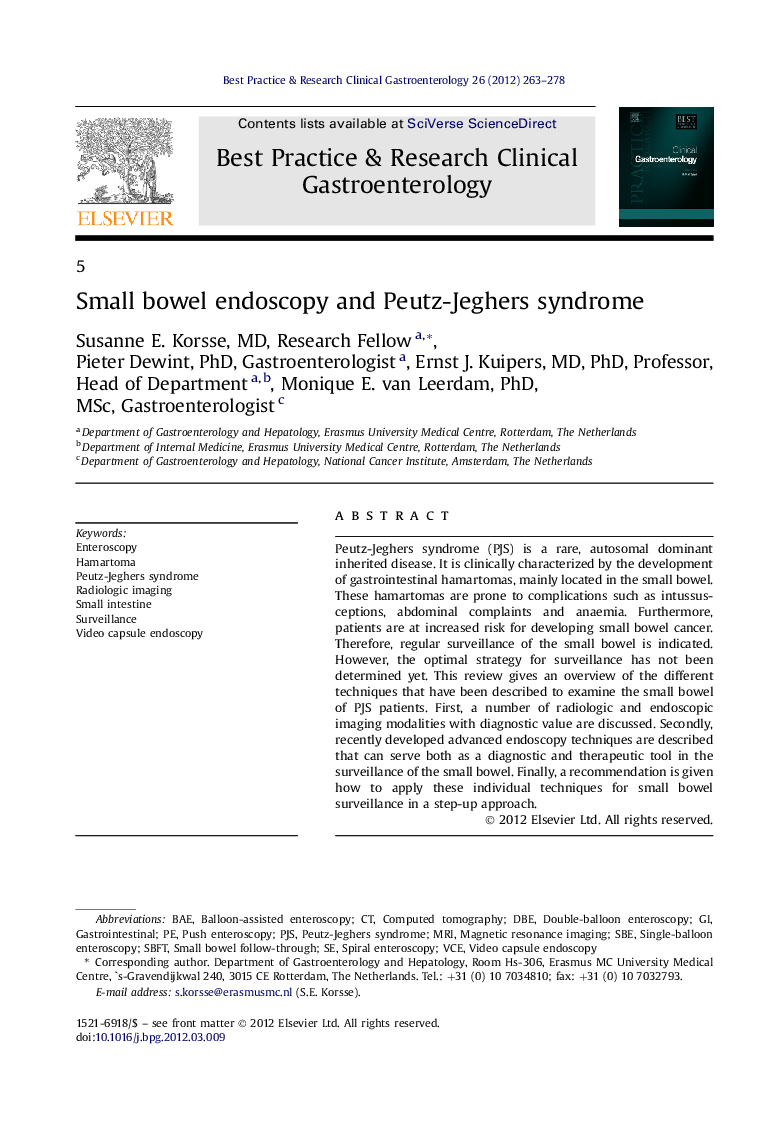| Article ID | Journal | Published Year | Pages | File Type |
|---|---|---|---|---|
| 3254252 | Best Practice & Research Clinical Gastroenterology | 2012 | 16 Pages |
Peutz-Jeghers syndrome (PJS) is a rare, autosomal dominant inherited disease. It is clinically characterized by the development of gastrointestinal hamartomas, mainly located in the small bowel. These hamartomas are prone to complications such as intussusceptions, abdominal complaints and anaemia. Furthermore, patients are at increased risk for developing small bowel cancer. Therefore, regular surveillance of the small bowel is indicated. However, the optimal strategy for surveillance has not been determined yet. This review gives an overview of the different techniques that have been described to examine the small bowel of PJS patients. First, a number of radiologic and endoscopic imaging modalities with diagnostic value are discussed. Secondly, recently developed advanced endoscopy techniques are described that can serve both as a diagnostic and therapeutic tool in the surveillance of the small bowel. Finally, a recommendation is given how to apply these individual techniques for small bowel surveillance in a step-up approach.
